A fat Ferrari, pickles on pedestals and two sausages in an intimate embrace — welcome to the weird world of Erwin Wurm, one of Austria’s most famous contemporary artists, who wants us to embrace the absurd.
If we look at “our world from another perspective, from the perspective of the absurd, we might see more,” Wurm said as a retrospective of his work opened in Vienna’s Albertina Museum to mark his 70th birthday.
“Everything seems normal to us,” he said, but if we took another look “we might see different things, and that might be interesting for us to understand things differently.”
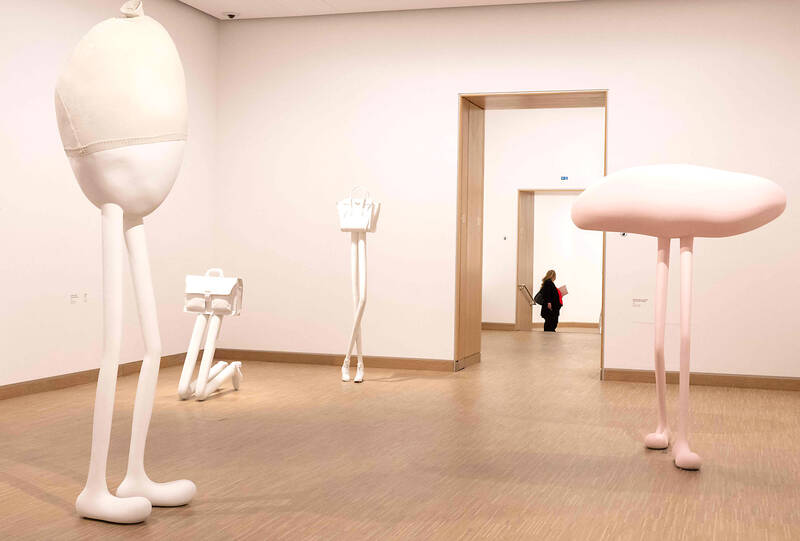
Photo: AFP
The show is a reflection on social norms, consumerist society and the diktats of appearance and even identity, with his quirky take on quintessentially Austrian staples such as sausages and pickled cucumbers alongside luxury bags on giant legs, miniature houses and stacks of clothing.
“He likes to take everyday things... and present them as abstract elements, to make artworks out of them,” curator Antonia Hoerschelmann said.
PLAYFUL
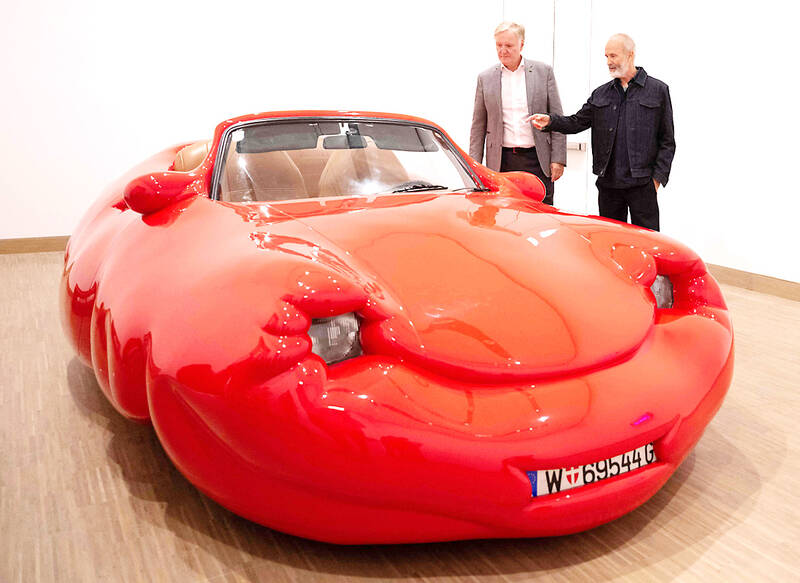
Photo: AFP
Born in the central city of Bruck an der Mur, Wurm wanted to become a painter, but after a university entrance exam found himself in a sculpture class instead.
“It was a big shock... I was frustrated and sad, but then after some time I thought that maybe it’s a challenge. And from then on I started to think about the notion of sculpture,” Wurm recalled.
His walk-in rural school allows visitors to squeeze inside through a small entrance, recalling Wurm’s 2010 work Narrow House based on his parental home.
Wurm said he was trying to recreate the “claustrophobic” and “quite rigid” post-World War II Austria where he grew up.
But he also offers more playful approaches.
In his famous One Minute Sculptures, the public is invited to lie down for a minute on tennis balls or slip into sweaters to “connect them much more to a piece.”
There is a darker undercurrent to some of his most recent creations, such as a sculpture of what seems like someone wearing a shirt and pants but with no head.
“Instead of the people I have the clothes. It’s like a shadow of something... We still can recognize something, a human being, but not a person. So the personality is cut out,” he said, evoking a “dystopian future”.
“I’m not happy with our world. How it’s progressing and how we treat each other. It’s just unbelievable, terrible,” he said.
The idea of having a retrospective of his works did not appeal to him right away.
“I’m not interested in looking back but in looking forward,” he said. “I like to work, it’s the center of my life and I would like to go on and develop new ideas and develop the old ones.”
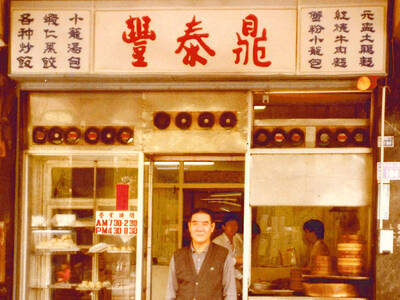
March 24 to March 30 When Yang Bing-yi (楊秉彝) needed a name for his new cooking oil shop in 1958, he first thought of honoring his previous employer, Heng Tai Fung (恆泰豐). The owner, Wang Yi-fu (王伊夫), had taken care of him over the previous 10 years, shortly after the native of Shanxi Province arrived in Taiwan in 1948 as a penniless 21 year old. His oil supplier was called Din Mei (鼎美), so he simply combined the names. Over the next decade, Yang and his wife Lai Pen-mei (賴盆妹) built up a booming business delivering oil to shops and
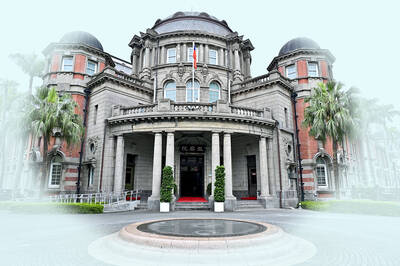
The Taipei Times last week reported that the Control Yuan said it had been “left with no choice” but to ask the Constitutional Court to rule on the constitutionality of the central government budget, which left it without a budget. Lost in the outrage over the cuts to defense and to the Constitutional Court were the cuts to the Control Yuan, whose operating budget was slashed by 96 percent. It is unable even to pay its utility bills, and in the press conference it convened on the issue, said that its department directors were paying out of pocket for gasoline
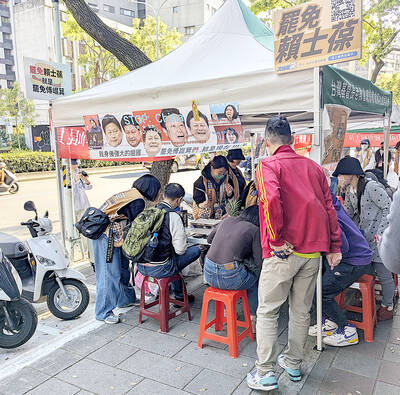
On March 13 President William Lai (賴清德) gave a national security speech noting the 20th year since the passing of China’s Anti-Secession Law (反分裂國家法) in March 2005 that laid the legal groundwork for an invasion of Taiwan. That law, and other subsequent ones, are merely political theater created by the Chinese Communist Party (CCP) to have something to point to so they can claim “we have to do it, it is the law.” The president’s speech was somber and said: “By its actions, China already satisfies the definition of a ‘foreign hostile force’ as provided in the Anti-Infiltration Act, which unlike

Mirror mirror on the wall, what’s the fairest Disney live-action remake of them all? Wait, mirror. Hold on a second. Maybe choosing from the likes of Alice in Wonderland (2010), Mulan (2020) and The Lion King (2019) isn’t such a good idea. Mirror, on second thought, what’s on Netflix? Even the most devoted fans would have to acknowledge that these have not been the most illustrious illustrations of Disney magic. At their best (Pete’s Dragon? Cinderella?) they breathe life into old classics that could use a little updating. At their worst, well, blue Will Smith. Given the rapacious rate of remakes in modern